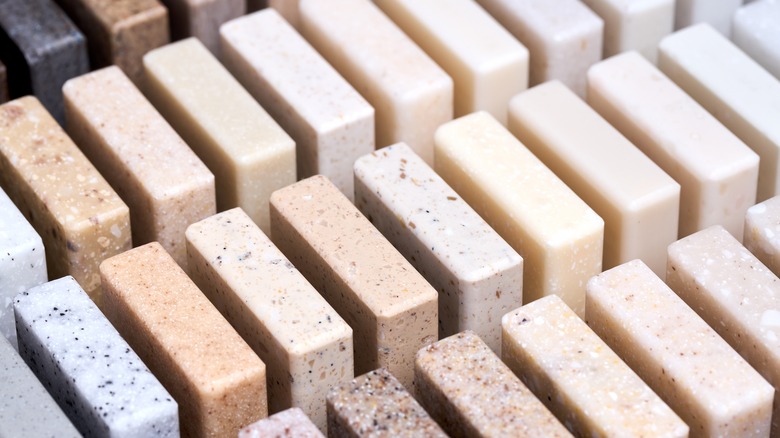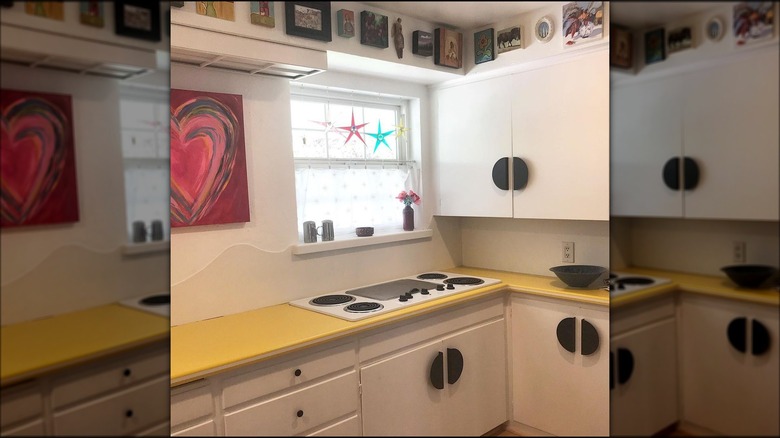The Countertop Color That Will Make Your Home Nearly Impossible To Sell
In order to sell a home quickly and for top dollar, you have to make it attractive to a wide variety of buyers. This generally leads to neutral tones throughout the home, especially for more permanent features such as your choice of countertop. That means that while white, gray, and black countertops tend to be favorites for buyers, one particular color — yellow — often elicits the opposite reaction.
Yellow countertops in the kitchen would give most potential buyers pause and might even turn them off from the home, whether those counters are composed of a yellow laminate or a yellow-toned natural stone. Neither of these are the best material if you're looking for a quick sale or high resale value. Keep in mind, bathrooms and kitchens tend to add the most value to homes, so choosing the right countertop for these spaces is essential. Countertop upgrades can provide a return on investment between 60% and 80% on average. So, if you're looking to sell a home for top dollar, choosing the ones that will be most attractive to buyers — and yes, replacing those yellow countertops — will help you achieve this number.
Yellow has some negative connotations better avoided in the kitchen
In general, yellow isn't a great choice for your kitchen. Yes, yellow often symbolizes sunshine and cheerfulness, but in the kitchen — especially with countertops — the color has connotations of aging and discoloration. White stones, like marble and quartz, can yellow from sun exposure, cleaning chemicals, and dirt. Because of this, yellow countertops can give the impression of poor quality or poor maintenance. Buyers are left feeling that the counters are stained from food or heat damage, an off-putting image for those looking to buy a home with an upgraded kitchen.
All in all, this bold aesthetic choice probably won't resonate with the majority of homeowners' tastes. For many people, the color can look outdated and may conjure images of colored laminate, which was popular in the 1960s, and yellowish-tan granite that gained popularity in the 1970s. For others, it may be incompatible with the style they envision for their home, and difficult to match with cabinet colors or backsplash tiles. As a result, most potential buyers will probably see yellow countertops as a future project to tackle, which may turn away anyone looking for either a turnkey property or a house that requires minimal enhancements.

